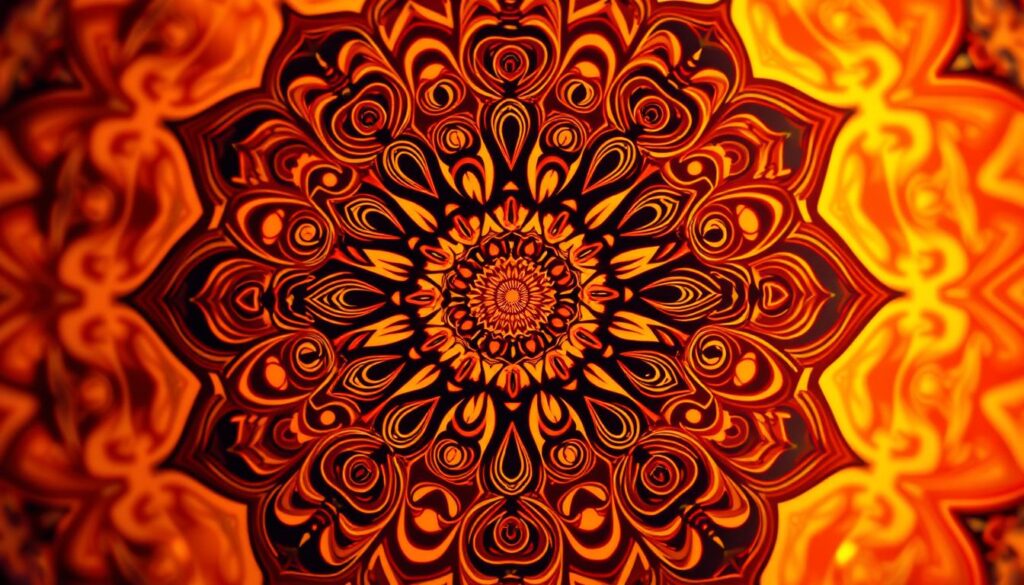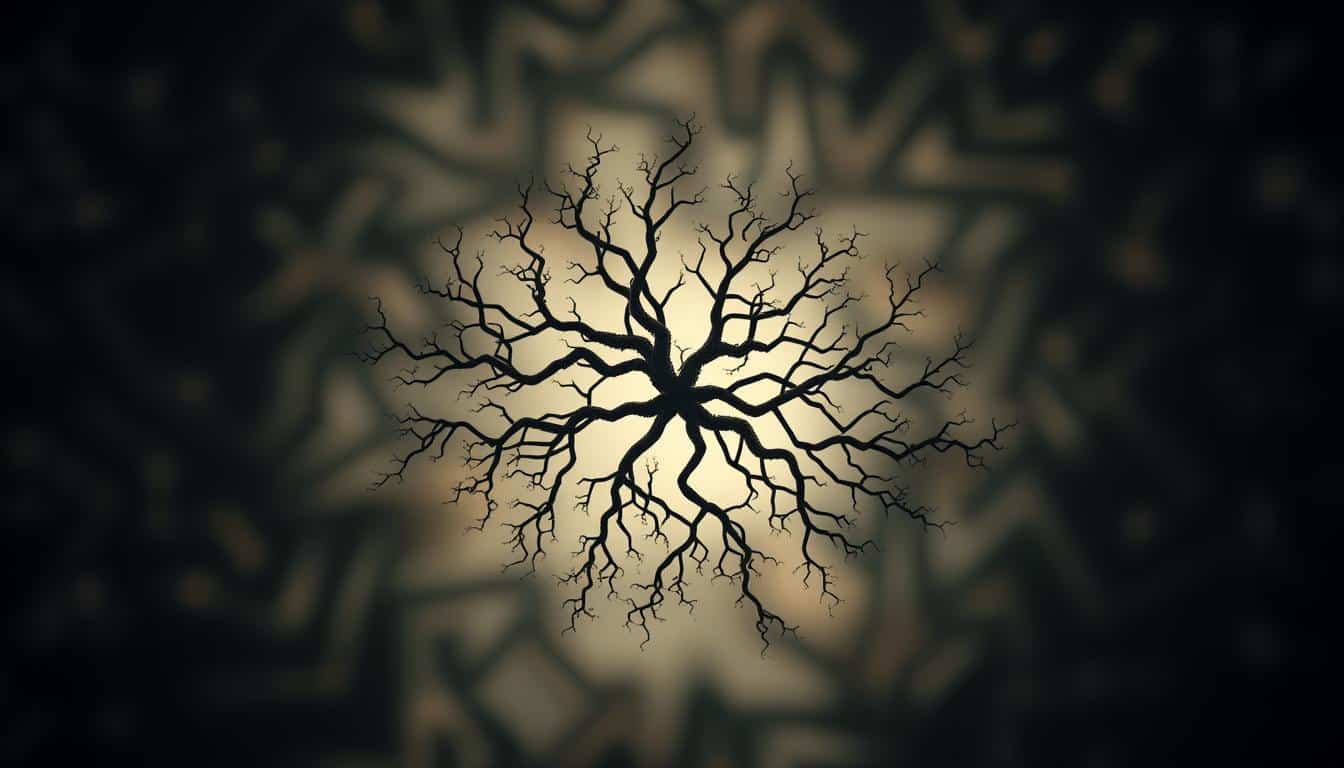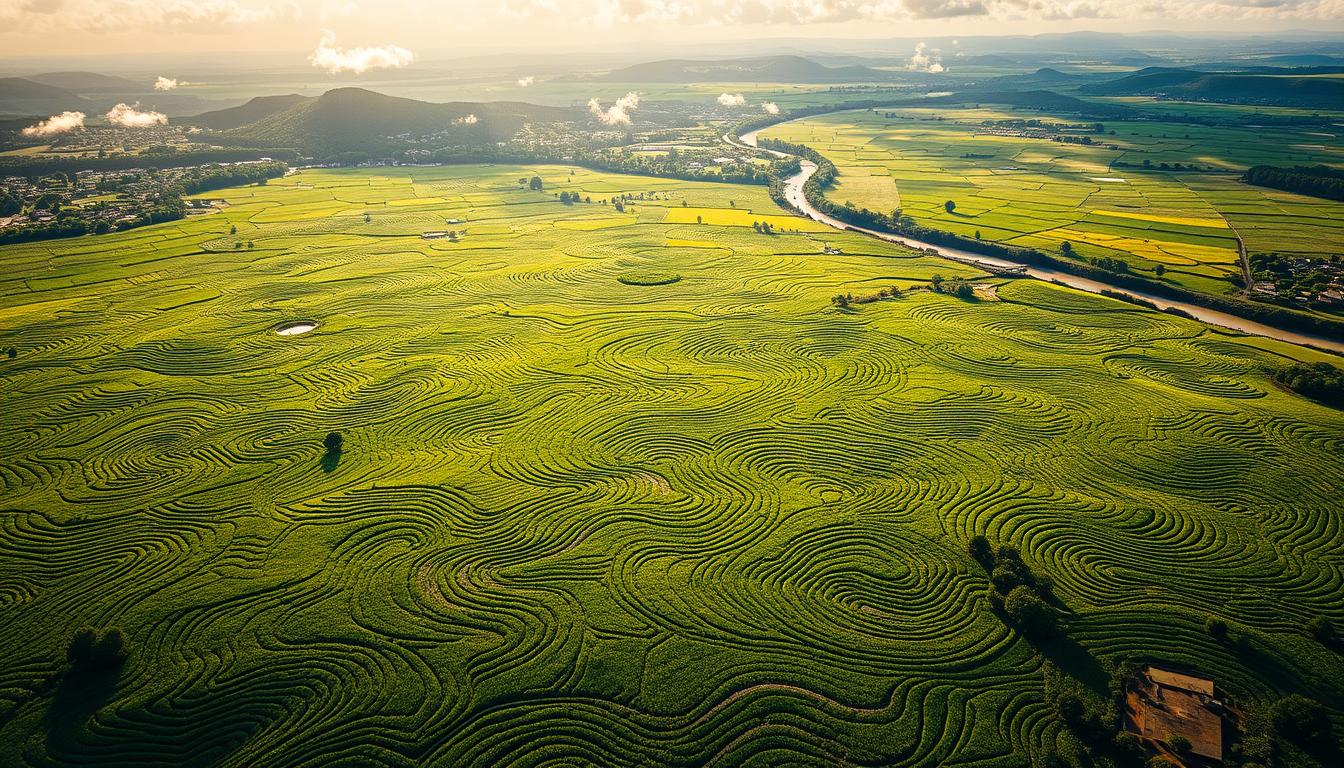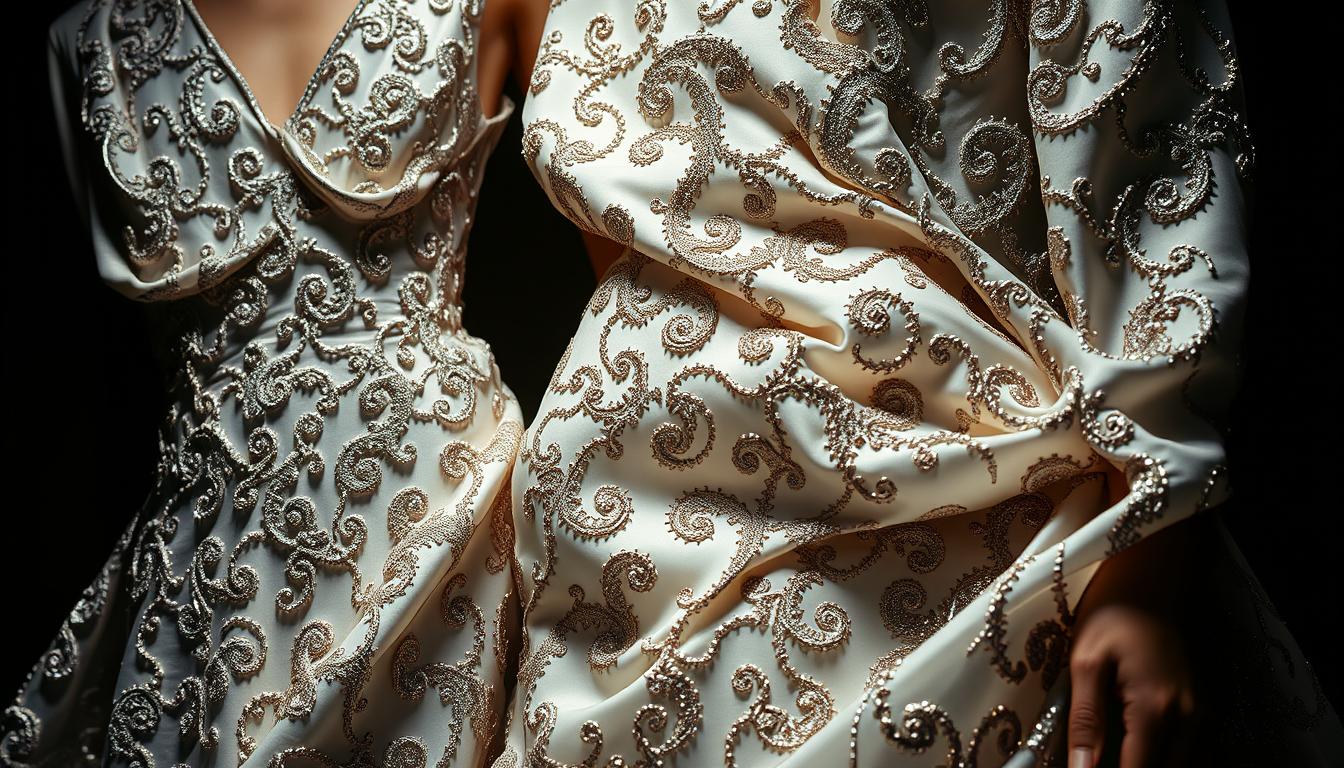Fractal design is very important in the world of Indigenous art. It appears in many forms, like detailed baskets and colorful body paint. These patterns show the deep connections Indigenous people have with their culture. They also highlight their stories of resilience and transformation. Fractal patterns make art look better and help express cultural messages. This article explores the significance of fractal design in both history and today. It shows how this art celebrates Indigenous heritage.
Understanding Fractal Design in Art
Fractal Design blends math and art, creating complex patterns from simple rules. These Mathematical Patterns are alike at different sizes. They appear in nature, like coastlines and tree branches. In Indigenous Aesthetics, these patterns tell unique cultural stories.
Indigenous art features Art Patterns based on fractal geometry. These designs show themes of identity, spirituality, and nature. Through Visual Complexity, we see that fractals in art carry deep meanings.
Fractal designs link art to the environment, showing nature’s influence on culture. Indigenous artists use these patterns to add depth to their work. This combination of theory and tradition helps us see both in new ways.

Historical Context of Indigenous Art
Indigenous Art History is a rich blend of culture and time. It shows how art evolved with cultural heritage at its core. Throughout the centuries, these art forms mirrored traditional practices and historical impacts on Indigenous communities. Art wasn’t just for showing feelings but also for sharing community stories and rituals.
When colonization and globalization came into play, they shook things up. Indigenous artists started mixing their traditional ways with new styles and techniques. This mix shows the strong spirit of Indigenous art. It shows artists holding on to their roots while navigating new influences.
Nowadays, more people appreciate Indigenous art than ever before. Understanding its history helps us see its vital role in keeping culture alive and shaping identities today. This deep connection between past and present makes Indigenous art truly significant.
The Role of Baskets in Indigenous Culture
Baskets in Indigenous Culture are key items that show everyday life and artistic expression. They hold deep cultural importance. These woven items meet practical needs and show the values and traditions of different communities. From storing items to being part of ceremonies, baskets highlight Indigenous artistry.
Significance of Baskets in Daily Life
In the daily lives of Indigenous peoples, baskets are very important. They are used in many ways:
- Storage: Baskets are made to store food, tools, and personal items, keeping important things neat and within reach.
- Transport: Their designs help in carrying things, which is essential in activities like trade and gathering.
- Ceremony: Baskets are also made for spiritual events, showing a link to their heritage and beliefs.
The Aesthetics of Fractal Patterns in Baskets
Baskets are beautiful with complex fractal patterns that look amazing and carry deep cultural meanings. Artisans use different weaving techniques to make these designs. These patterns often represent natural shapes, showing how people connect with the environment. They also help in telling stories. The making of baskets demonstrates the skill and traditions of Indigenous people, turning everyday objects into works of cultural art.
Fractal Design in Body Paint
Body paint is a colorful way people show their culture’s history and identity. It’s more than just art; it’s a way to share stories and connect with ancestors. Fractal designs in body paint link personal stories to cultural roots. They show strength and change over time.
Expression and Identity Through Body Art
Indigenous body art is a strong link to cultural history. It shows society roles, cultural tales, and spiritual beliefs. Every pattern tells a part of someone’s identity and past.
By using fractal designs, individuals share messages with their community. These patterns carry years of traditions and memories. Body paint becomes a way to tell stories, blending personal meanings with community history.
Symbolism Embedded in Body Paint Patterns
Body paint patterns hold deep meanings. They can symbolize nature, animals, and spirits important to Indigenous cultures. Fractal designs highlight how everything in life is connected. They link history, life, and personal stories.
Each paint layer adds more to the story of cultural heritage. This art helps keep traditions alive while exploring modern identities.
Case Studies: Notable Indigenous Artists
This section showcases Indigenous Artists who use fractal design in their art. They use different materials to share their rich cultural stories and talk about today’s issues.
William Cordova is known for using fractal designs in his art. His work shows his deep ties to his Peruvian roots. He mixes old symbols with new ideas. Cordova’s art looks at identity and feeling out of place, creating a dialogue between the past and the present.
Laurie Steelink is another impressive Indigenous artist. She uses fractal patterns in her textile art and prints. Her work highlights the importance of storytelling through pictures. Steelink combines ancestral traditions with modern styles, sharing her cultural heritage uniquely.
These case studies show how Indigenous art is growing. These artists prove how fractal design isn’t just for looks. It’s key in telling their cultural stories and showing who they are.
Fractal Design in Textile Patterns
Andean textiles show the complex art of Indigenous cultures. They are known for their vivid geometric patterns. These patterns do more than just look beautiful. They tell deep stories about culture and society through repeated designs. This adds layers of meaning to each textile piece.
Andean Textiles and Their Geometric Patterns
The skill in Andean textiles is clear through their geometric designs. These patterns often reflect nature, like landscapes and animals. They use bright colors from natural dyes. The designs share tales of heritage, community, and nature. The way these textiles are made varies, adding to their cultural value.
The Influence of Fractal Designs on Contemporary Art
Fractal design from Andean textiles impacts modern art. Artists use these traditional patterns in their works. This mixes history with today’s social themes. It honors Indigenous roots while welcoming new viewers. Thus, fractal designs keep evolving, connecting old and new.
Fractal Design in Modern Indigenous Art Exhibitions
Modern Indigenous Art Exhibitions are a vibrant stage. They show the deep link between culture and art, focusing on fractal design. Places like the Moss Arts Center display art from William Cordova and Laurie Steelink. Their work shares cultural stories using fractal elements. These shows increase appreciation for Indigenous art and support learning.
Analysis of Current Exhibitions Featuring Fractal Design
The art world is now paying more attention to fractal designs in Indigenous art. This focus highlights the detailed patterns of tradition. Artists mix these geometric patterns in new ways, from modern art pieces to age-old methods. This includes:
- Integration of fractal patterns into storytelling
- Contemporary adaptations of Indigenous designs
- Focus on viewer interaction and engagement
The Role of Cultural Narratives in Art Installations
Cultural stories are crucial in presenting fractal design in today’s art. They help viewers understand the artwork’s history, meaning, and importance. Great installations often show:
- The relationship between fractals and Indigenous identity
- The exploration of personal and communal stories
- Networking and collaboration among Indigenous artists
Fractal Design in Indigenous Art: From Baskets to Body Paint
Indigenous art shows the flexibility of fractal design, from baskets to body paint. Baskets are both useful and beautiful, featuring complex patterns. These patterns share stories of culture and self, linking people together.
In these artworks, fractal design shows strength and ongoing tradition. The repeating patterns tell a story of connection between past and future. By using fractal design, artists celebrate their culture and invite others to learn.
Art forms like these start conversations about culture. Baskets and body paint go beyond looking good to share experiences and histories. As these art forms change, they inspire us to think about who we are, the community, and how creativity changes us.
Exploring the Impact of Fractal Design on Identity
Fractal Design is key in defining the identity of Indigenous people. It acts as a visual language that captures their Cultural Identity. Through detailed patterns, these designs share deep historical stories and show how cultural practices continue.
Artists use fractal elements in their work. This connects people to collective memories and personal moments, creating a feeling of belonging in the community.
Indigenous Art and identity come together in complex ways. Fractal designs blend old and new styles, allowing people to show their unique selves while respecting their heritage. This is seen in textiles, body paint, and pottery.
Community involvement is also crucial. Art reflects cultural identity and starts conversations among different people. The beauty of fractal patterns helps others learn about and value Indigenous traditions. This leads to a deeper understanding of how identities are formed.
The Future of Fractal Design in Indigenous Arts
The landscape of Indigenous arts is changing. Fractal design trends are key in this shift. New artists try to keep a balance between modern styles and traditional values. Keeping cultural traditions alive while adapting is key for the future of Indigenous arts.
Technology connects old and new generations. It lets artists use digital tools to make complex fractal patterns. These designs connect with both modern viewers and traditionalists. This shift to tech helps keep creativity alive within cultural limits.
Now, more artists from different cultures work together. They use fractal designs to understand each other’s art better. These partnerships make Indigenous arts more visible. They also encourage cultural sharing, making the art world richer.
Globalization brings both challenges and chances. Some traditional art might get lost, but mixing cultures can create new, vibrant designs. It’s vital to keep cultural traditions alive during these changes. Artists and cultural groups need to work together. They should aim to honor the past while embracing new ideas.
Conclusion
In summary, fractal design in Indigenous art shows its deep cultural importance. It’s more than just pretty. It connects stories and generations. Baskets and body paint are not just to look at. They’re full of meaning, showing identity and heritage.
The link between different art forms shows fractal designs’ vital role in Indigenous heritage. This art is still alive and sparks new creativity today. It carries old stories and importance. As these patterns evolve, they ensure Indigenous art stays meaningful for new generations.
Fractal design’s lasting role in Indigenous art highlights its impact on cultural identity and community. Looking ahead, we must cherish and support art that celebrates these traditions. This will keep the intricate beauty of fractal patterns alive in our shared culture.



